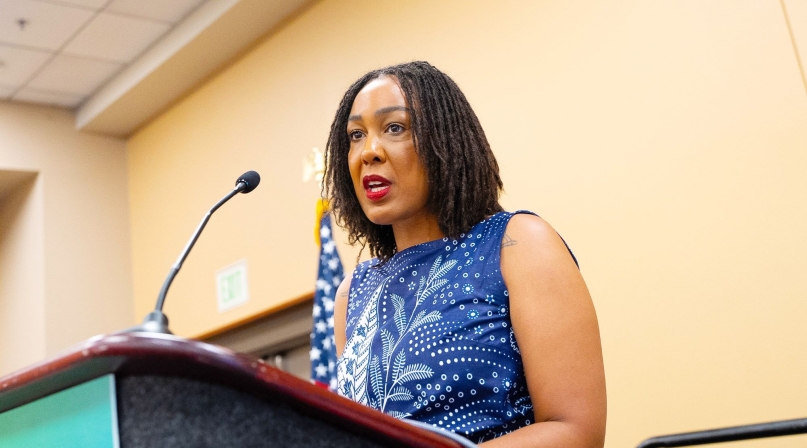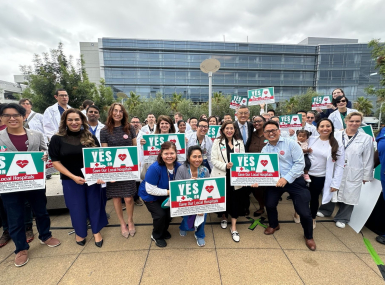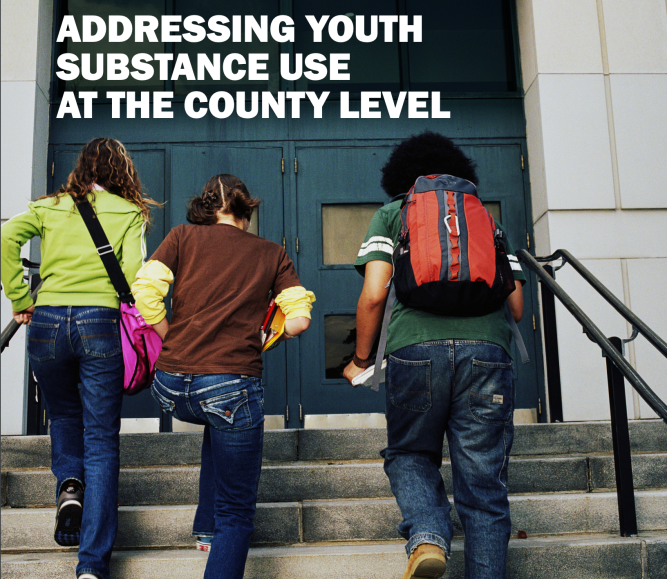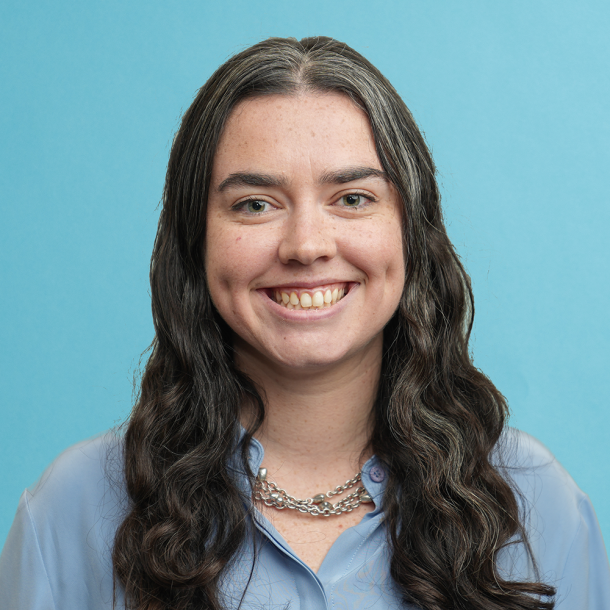Engaging people with ‘lived experience’ helps build substance use disorder programming

Key Takeaways
Overdose deaths are down nationally, but that doesn’t mean that the work is done, several panelists said during a “State and Local Partnership for Overdose Prevention” meeting July 11 at the NACo Annual Conference.
Engaging people with lived experience, both those who are in recovery and in active drug use and investing in evidence-based practices are the best ways for localities to build effective substance use disorder and overdose programming, they said.
Fatal overdose is just one data point, and it’s not a barometer for community health, said Keli McLoyd, director of Philadelphia’s overdose response unit. While fewer people are dying of drug overdoses, that doesn’t mean fewer people are struggling with substance use disorder, but instead that more people are surviving overdoses, thanks to increased harm reduction initiatives, like widespread distribution of Naloxone, she added.
“It would be so much easier if we knew who was using drugs — if it were just ‘that person over there’ we could point at,” McLoyd said. “But we also know that the amount of folks that are experiencing substance use disorder and houselessness in that very visible way are actually a very small percentage of the population.
“So, that really requires us to develop different interventions and methods of supporting people that might be at risk for overdose, without even really knowing who these people are.”
Philadelphia’s Response Unit acts as the convener among city departments — including the Office of Homeless Services, the health department, the fire department, emergency services, the commerce department and law enforcement — so that work in the overdose space isn’t done in siloes, according to McLoyd.
Localities need to invest in evidence-based practices, because even if it’s more costly on the front-end, comprehensive harm reduction and prevention work will more than pay for itself, according to Megan Reed, a research assistant professor at Thomas Jefferson University.
“We know that medication for opioid use disorder works — it cuts fatalities by about half, and I don’t know any other medication that does that. It’s incredible,” Reed said. “Widespread Naloxone distribution works, it saves lives. And we have to keep investing in resources.
“Some resources seem really expensive — providing housing to people, meeting basic needs, healthcare needs, it looks expensive — but when you address those upstream determinants of health, you also address conditions that create diabetes, hypertension, things like that, and you can also interrupt the generational cycle of addiction and drug use when you reduce those adverse experiences.”
Down the line costs show up in other ways too, which Philadelphia is seeing right now in having to increase its budget to serve the city’s growing disabled population, McLoyd said. According to Thomas Jefferson University Hospital data, amputations for patients who use drugs doubled from 2018 to 2022 due to an increase in severe wounds from drug use, the majority of which was from Xylazine, a veterinary tranquilizer also known as “Tranq” that’s entered the drug supply.
“So as we think about something like Xylazine and the wounds that it causes and the amount of amputations it causes, one of the things that we’ve had to think about as a system is that we had to put a lot more money into our capital budgets to pay for vehicles to transport people, because more people are in wheelchairs,” McLoyd said.
“Philadelphia is a very old city, and so many of our facilities were just not made for people experiencing loss of limbs, so in addition to the sort of heartbreaking and humanness of it, there are actual costs that are associated with making sure our facilities can take care of folks.”
Pennsylvania’s overdose prevention program provides free drug test strips and Naloxone (it’s distributed more than 820,000 doses) across the state, according to Latika Davis-Jones, the secretary of the Commonwealth of Pennsylvania’s department of drug and alcohol programs.
In response to a shortage in the state’s substance use disorder workforce, the department created a student loan repayment program that has served more than 500 individuals so far in its first two rounds of funding, providing an average payment of $68,000 for the first round and an average of $56,000 for the second.
“We wanted to incentivize individuals to stay in the field,” Davis-Jones said. “Without the healers and helpers, we can’t support those that are on the journey to recover.
“… For many individuals in the field, we’re completely eliminating their student loan debt, and people are really excited about that. The economic impact of that alone — people are saying that now they can pay for their kids’ college tuition without taking student loans, they’re buying homes.”
One Day at a Time, an addiction recovery services organization based in Philadelphia, functions through a peer support model and offers supportive services, including connections to housing and healthcare, to low-income and unhoused individuals with substance use disorder. Roughly 80% of the organization’s staff have previously lived on the streets, according to Mel Wells, president and CEO of One Day at a Time.
“April Steele, the leader of our outreach team of over 30 employees, now has a master’s degree,” Wells said. “She used to do come from a life of prostitution, a life of drug dealing and drug use, but she’s the peer support that goes out every day, along with the team, to reach back out to their friends and let them know that miracles still happen.”
The organization worked to create the Same-Day Pay program, which offers same-day payment, as opposed to a week or monthly structure, for participants to do tasks that better the community, such as painting murals or cleaning up neighborhoods. Providing same-day pay helps break down the financial barriers of accessing supports necessary for recovery, such as housing, Wells said.
Working directly with people who use drugs and seeking their input is the most effective way to create programming, Reed said. Pennsylvania’s department of drug and alcohol programs staff have traveled across 40 counties and sat down with more than 400 people at roundtable discussions — including people with lived experience who are actively engaged in treatment, people who are actively using drugs and not interested in treatment and people who are contemplating starting treatment — to learn more about what’s working and what’s not when it comes to SUD support and overdose programming, according to Davis-Jones.
“They are the experts on their own lives,” Reed said. “Through doing qualitative research, that’s often the best way to hear early on what people are seeing. And then, in this dynamic drug market, it’s so important to be on the ground, capturing those perspectives. They’re often the best ones to come up with solutions.”
Related News

CMS issues new guidance on Medicaid Community Engagement Requirements
On December 8, the Centers for Medicare & Medicaid Services (CMS) released a Medicaid and CHIP Services Informational Bulletin (CIB) directing states on how to implement the Medicaid community engagement requirements enacted under Section 71119 of the One Big Beautiful Bill Act legislation (Public Law 119-21), or H.R. 1.

California county sales tax measure backfills federal healthcare cuts
Santa Clara County, Calif. will raise an estimated $330 million each year from a sales tax to backfill lose Medicaid funding.
Resource
Addressing Substance Use at the County Level


